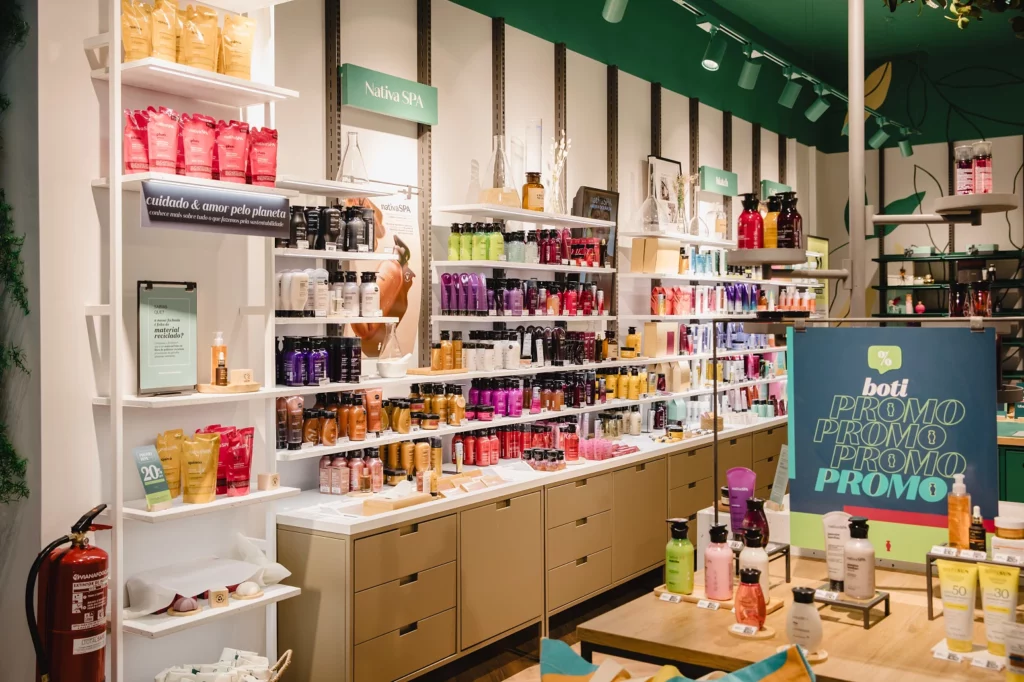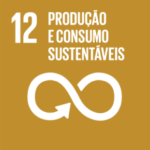The O Boticário group, which has been present in Portugal for 38 years, is opening its first O Boticário LAB store outside Brazil. It is located in CascaiShopping and was designed to showcase the brand’s various sustainable practices. Peggada was present at the opening and tells you all about it.
It’s been a long time coming. For many years now, the Boticário group has been implementing more and more sustainable measures, both in its production and in its stores throughout Brazil and Portugal.
Now, with the opening of the first Boticário Lab in Portugal, there is a meeting point for everyone to learn more about these sustainability details and, above all, there is a space to grow and to pass on a message.
“This is Boticário’s fourth Lab store, the first in Portugal, and it was created to provide an experience beyond the normal shopping journey,” Maria João Santos, Marketing Director for the Boticário Group, explained to Peggada.
A shelf dedicated to refills and furniture made from iron and recycled and recyclable materials. Floral decoration made up of real, easy-to-maintain plants and a façade built from 280 recycled bottles.
All the products sold in the store are FSC certified (which ensures that the products come from well-managed forests that offer environmental, social and economic benefits) or GOTS certified (organic and ecological textiles), as is the packaging, paper, boxes and cloth bags. The store also has digital screens and a space dedicated to “Boti Recicla” – where customers can deposit any hygiene and cosmetics packaging, not just from the Boticário brand.

Catarina Parente, executive director of Brand Experience at the Boticário Group, who was also present at the opening, told Peggada that the store is designed to host and promote knowledge actions for consumers. One of the projects that will migrate from Brazil to Portugal is “Extinto” (Extint), which alerts consumers to the need to preserve the planet through fragrances. “These are fragrances created to rescue the original essence of some iconic spaces, such as Guanabara Bay in Rio de Janeiro, an oceanic bay that is suffering from environmental degradation due to pollution and inadequate waste disposal,” she says. Perfumers from O Boticário visited the area and captured aromatic molecules using Headspace technology.
This technique is used to capture and analyze aroma molecules in the air, working in a similar way to how the human nose detects smells. It involves measuring volatile compounds (substances with high vapor pressure that evaporate easily at room temperature) around a flower, herb or plant.
The aroma is then released from the sample and retained under a glass dome, which means that the smell is captured effectively and non-invasively in the environment, since there is no need to remove samples.
“The idea here is to appeal to the fact that, if we don’t take care, nothing lasts forever,” she recalls.
More fragrances will be captured in other places around the world and will culminate in an exhibition in this store, located on the first floor of CascaiShopping.

Marta Cerqueira is from Minho and a vegetarian. Luckily, she lives in Lisbon, where there is more tofu than sarrabulho. She has been a journalist for over 15 years, the last of which writing about food and sustainability. Now, out of the newsroom, she continues to write whenever she can, be it in magazines, journals, post its, or on her Instagram page, which she uses to share a life divided between being a mom-person-foodie-traveler. Still, she created Peggada so she could write about what doesn't fit in a magazine, journal, post it or Instagram: a better world.
Related articles
Sustainable Development Goals 🍃

This article promotes an action that encourages the reduction of waste generation through prevention, reduction, recycling, and reuse.
➡️ To discover more businesses that are aligned with Sustainable Development Goal 12 “Sustainable Production and Consumption” click here.
➡️ For news, tips and interviews about this topic, click here.
➡️ Want to know more about the 17 United Nations Sustainable Development Goals? Click here
Esta publicação também está disponível em:
![]() Português (Portuguese (Portugal))
Português (Portuguese (Portugal))




